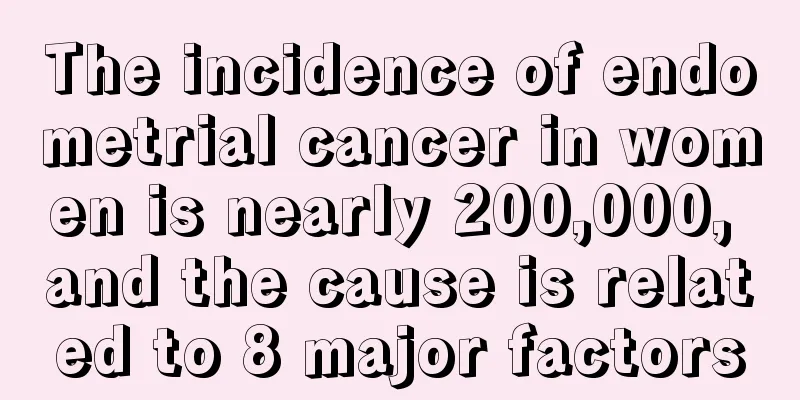What are the treatments for liver cancer? Who will develop liver cancer?

|
Liver cancer is a malignant tumor of the liver. According to statistics, the mortality rate of liver cancer is high, second only to gastric cancer and esophageal cancer, and has become one of the many malignant tumors. Liver cancer is not an incurable disease. The treatment effect of early liver cancer is much better than that of late liver cancer. However, many patients with early liver cancer do not pay attention to treatment, and eventually develop into late liver cancer, which is too late to regret. There are four specific methods for the treatment of liver cancer. Let's take a look at these four methods of treating liver cancer. Treatment with Chinese medicine. Liver cancer is one of the common cancers in my country. Clinical manifestations: The early onset is often insidious, with no obvious symptoms and signs, and is often discovered through alpha-fetoprotein testing or surveys. Common symptoms include intermittent or persistent pain in the liver area, slow upper abdominal distension, loss of appetite, progressive enlargement of the upper abdominal mass, systemic symptoms include weight loss, fever, diarrhea, jaundice, and complications include gastrointestinal bleeding, hepatic coma, ruptured hemorrhage of liver nodules, and secondary infection. In clinical practice of traditional Chinese medicine, this disease is often classified as "liver accumulation", "stomachache", "ascites", "jaundice" and other categories. Traditional Chinese medicine believes that emotional depression, poor qi movement, and liver failure to release are the symptoms of upper abdominal distension and pain, decreased appetite, greasy tongue coating, and stringy and thin pulse; qi stagnation and blood stasis, blood obstruction, accumulated over time, so there is accumulation under the ribs, distension and discomfort, fatigue, dark complexion, weight loss, greasy tongue coating, dark purple tongue, and thin and astringent pulse; spleen deficiency produces dampness, dampness turns into heat, and heat toxicity is internalized, so there is jaundice, fever, and bleeding from the teeth; ascites, yellow and greasy tongue coating, and stringy and rapid pulse. Surgical treatment. Surgical resection is still the first choice for the treatment of liver cancer. Early resection is the key to improving the survival rate. The smaller the tumor, the higher the five-year survival rate. The indications for surgery are: ① Patients with a clear diagnosis and the lesion is estimated to be limited to one lobe or half of the liver. ② Patients without obvious jaundice, ascites or distant metastasis. ③ Patients with good liver function compensation and thrombin time not less than 50%. ④ Patients with heart, liver and kidney function tolerance. For patients with normal liver function, the amount of liver resection shall not exceed 70%, for patients with moderate cirrhosis, it shall not exceed 50% or only the left half of the liver can be resected, and for patients with severe cirrhosis, lobectomy cannot be performed. It is generally recognized that more than 80% of liver cancer combined with cirrhosis can be replaced by local resection instead of regular lobectomy. The effect is the same, and the liver function disorder after surgery is alleviated. The surgical mortality rate is also reduced. Since radical resection still has a high recurrence rate, it is advisable to regularly check AFp and ultrasound imaging after surgery to monitor recurrence. Chemotherapy. CDD[p is the first choice for the most effective drugs for liver cancer. Other commonly used drugs include 5Fu doxorubicin (ADM) and its derivatives, mitomycin Vp16 and methotrexate. It is generally believed that the efficacy of intravenous administration of a single drug is poor. Hepatic artery administration and (or) embolization and combined with internal and external radiotherapy are more commonly used and have more obvious effects. For some advanced liver cancers, there is no indication for surgery and the portal vein trunk is blocked by cancer thrombus. For patients who are not suitable for hepatic artery intervention and some patients after palliative surgery, combined or sequential chemotherapy can be used. Common combined regimens are cisplatin 20mg + 5Fu 750mg ~ 100mg intravenous drip for 5 days once a month 3 to 4 times for a course of treatment. Doxorubicin 40 ~ 60mg on the first day followed by 5Fu 500mg ~ 750mg intravenous drip for 5 consecutive days once a month 3 to 4 times for a course of treatment. The effect of the above regimens is evaluated differently. Chinese medicine for strengthening the body is often used during chemotherapy or intermittently to improve the patient's physical function to achieve the effect of chemotherapy. Interventional therapy. Interventional therapy is one of the most widely used treatment methods for liver cancer. It is a clinical application discipline that uses a small incision to introduce specific instruments into the lesion site of the human body for treatment under the guidance of radiological diagnostic equipment (digital subtraction X-ray machine, CT machine, MRI machine and conventional X-ray machine, etc.). Interventional therapy uses "non-surgical, minimally invasive surgery" methods to treat a variety of diseases. In recent decades, interventional therapy has developed rapidly and has become one of the three major clinical pillars along with internal medicine and surgery. Liver cancer patients must pay attention to treatment, especially those with early liver cancer. Once diagnosed, they need to receive timely treatment to avoid further deterioration of liver cancer. Liver cancer is so harmful that it is very important to prevent it, especially for people with a high risk of liver cancer. So, which groups of people are most likely to develop liver cancer? 1. Excessive intake of nitrosamine compounds. Dimethylnitrosamine has been isolated from the food of residents in South Africa, a high-risk area for liver cancer. This type of compound can also cause other tumors such as esophageal cancer. Therefore, nitrosamine compounds are also classified as one of the causes of liver cancer. 2. People with a family history of liver cancer. On the one hand, many hereditary diseases that damage the liver, such as pigmentation disease and glycogen storage disease, will develop into cirrhosis, and the incidence of liver cancer is also very high; on the other hand, it is believed that the familial clustering of liver cancer is mainly caused by the clustering of hepatitis B virus. There is currently no evidence that liver cancer can be inherited. 3. Eating food contaminated by Aspergillus flavus. Many years ago, a farm in the UK fed turkeys with peanut cake that was moldy due to Aspergillus flavus, causing 100,000 chicks to die quickly. Epidemiological studies have shown that the geographical distribution of liver cancer in my country is basically consistent with the distribution of Aspergillus flavus contamination. 4. Long-term alcoholism. Long-term alcoholism can significantly damage liver cells and lead to malnutrition, making the liver prone to cirrhosis, which can develop into liver cancer. Of course, in addition to the above-mentioned dietary factors, hepatitis B, parasitic diseases in the liver (such as Clonorchis sinensis), and genetic susceptibility are also closely related to the occurrence of liver cancer. 5. People living in areas with a high incidence of liver cancer. The areas with a high incidence of liver cancer in China are mainly in the southeastern coastal areas, such as Fusui and Longan in Guangxi, Xiamen and Tongan in Fujian, Qidong and Haimen in Jiangsu, Chongming and Nanhui in Shanghai, etc. In these areas, at least 30 people die of liver cancer per 100,000 people. In addition, the incidence of liver cancer is higher in coastal areas than in inland areas, and higher in southeastern and northeastern areas than in southwest and northwest areas. 6. Patients with post-hepatitis cirrhosis. The above cirrhosis patients develop cancer, and most of them have recurrent illness, poor improvement of liver function, and frequent complications such as ascites. The above are the six major groups with a high incidence of liver cancer. These six groups of people must pay attention to developing good living habits and taking measures to prevent liver cancer. In addition, they should have regular check-ups to detect liver disease in a timely manner and reduce the chance of liver cancer. |
Recommend
What diseases will be caused by lack of vitamin B
Vitamin B is one of the most common vitamins. In ...
What Chinese medicine prescription should be taken for throat cancer
Laryngeal cancer is one of the most common tumors...
How to take care of hangnails on fingers
If you have hangnails on your hands, do not tear ...
What physical signs does it mean when your feet suddenly become smelly?
Many people have the problem of smelly feet, but ...
The refrigerator freezer is frozen
The refrigerator is an electrical appliance neede...
Breast cancer staging, grading and recurrence
Breast cancer staging and recurrence: The breast ...
What's wrong with sleepy eyes
Many times people don’t understand what is happen...
Honey lemon with soda water?
Soda water is a very common drink in our daily li...
What kind of honey is best to drink in summer
Drinking honey in summer can achieve anti-fatigue...
Do you know the harm of smoking for teenagers?
Many times we think that smoking among teenagers ...
What are the folk remedies for treating hernia?
Hernia is very common. The main reason is the dis...
How to clean oil stains on clothes
For young mothers with small babies at home, the ...
What are the oral chemotherapy drugs for treating ovarian tumors?
There are many drugs for treating ovarian tumors....
I have a lump on the side of my neck, what is going on?
Many people don’t know why pimples on the neck gr...
Psychological problems of breast cancer patients at different stages
Psychological problems of breast cancer patients ...









